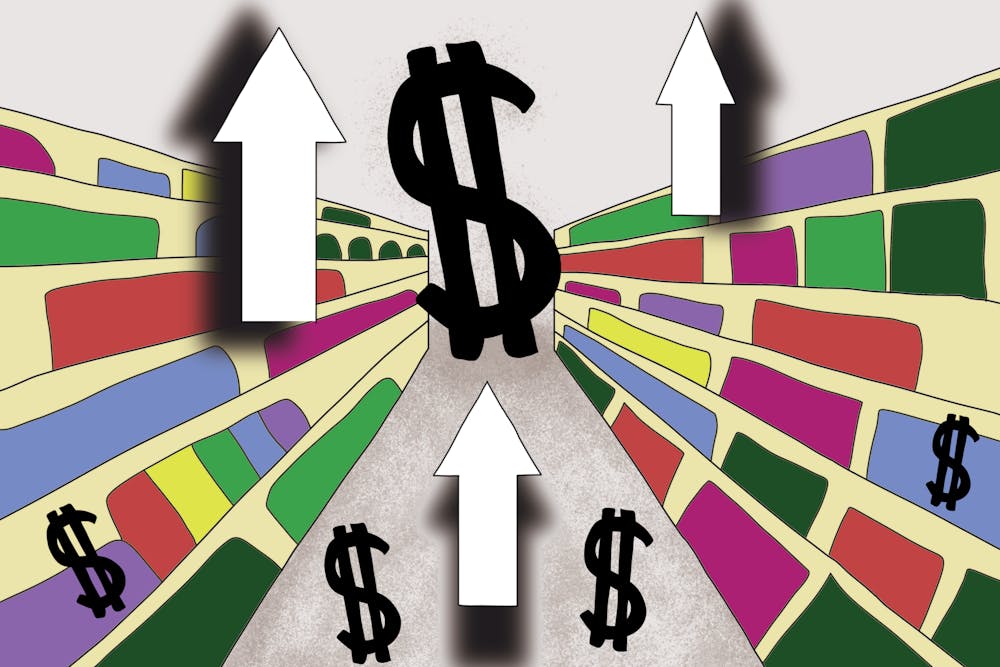You reach into a bag of your favorite snack, excited for a tasty treat. But there is more air in the bag than usual. You look inside and you could have sworn there used to be more pieces.
No, you’re not losing your mind. Your favorite products have been getting smaller. What’s going on?
Short answer: Shrinkflation.
Shrinkflation is a phenomenon in which companies decrease the physical size or quantity of their products. The price may stay the same, but the price per unit rises. For example, a container of crackers may remain the same price but contain fewer crackers.
Those changes are often subtle, with a very small difference between the old and new products. For example, a few observant consumers noticed a decrease in Huggies baby wipes from 768 to 704. A difference was also observed in Goldfish containers, from 30 oz to 27.3 oz.
These differences are completely intentional, as companies aim to make the change small enough to go unnoticed by consumers but large enough for them to save a few dollars. Additionally, if a change in a food product could be noticeable, they may tout the product as a lower-calorie option.
A report from Pennsylvania Sen. Bob Casey Jr. stated that while inflation rose to 14% between July 2020 and July 2022, corporate profits grew to 74%. Alongside that many specific types of groceries have exploded in price per unit. For example, household paper products, such as toilet paper and paper towels, saw a 34.9% price increase between January 2019 and October 2023. Of that 34.9%, 10.3% can be attributed to shrinkflation.
That concept is undeniably intimidating. Americans' purchasing power has diminished; ultimately, a dollar does not go nearly as far as it once did. The 2020s have not been the first era of shrinkflation, indicating that companies have long been cutting corners regarding packaging and quantity per product.
Fortunately, not all hope is lost. Shrinkflation, much like the rest of the economy, rises and falls in waves. That means that rates of shrinkflation will inevitably decrease at some point.
President Biden recently called for a bill allowing the Federal Trade Commission to regulate shrinkflation. That would also allow the commission to take civil actions against corporations that engage in the practice.
Members of the U.S. Congress agree with that as well. Sen. Casey Jr. has proposed “The Shrinkflation Prevention Act of 2024” with the endorsement of additional congressmen on the Committee of Commerce, Science and Transportation. It aims to hold companies participating in the practice accountable for their actions via legal repercussions and reduce the leeway companies have to reduce their product sizes.
In the meantime, there are still ways for consumers to manage shrinkflation. U.S. News and World Reportsuggests comparing per-unit prices to judge if a product is smaller and purchasing store-brand items. Also, the types of food you buy matter as well. Pre-made snacks like candy and chips have been hit the hardest, so instead, focus on purchasing foods such as poultry, eggs, fruits, vegetables and dairy, as those have not been as heavily impacted by shrinkflation.






